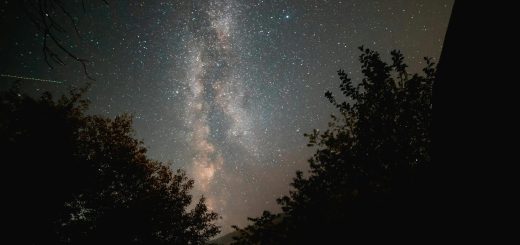Spain’s Diverse Cultures: Flamenco, Festivals, and More

Before diving in, please note: This post is for informational purposes only. If you’d like to know more about how we approach topics, feel free to check out our friendly Disclaimer Page.
Hey there, amazing readers! 🖐️ Just a quick note: yes, we know there are a lot of ads here. Trust us, we get it—it’s not the prettiest look, but they help us keep this blog alive and kicking. Those pesky little ads cover the costs of all the behind-the-scenes magic, from hosting and tech stuff to creating content we hope you’ll love.
We’re committed to delivering quality posts, and your support (even just sticking around despite the ads) means everything to us. So, bear with us, and thanks for helping us keep the good vibes rolling. Now, on to the fun stuff! 😉
TRANSLATE BUTTON AT THE END OF THE ARTICLE
When I think about Spain, my mind immediately swirls with images of colorful festivals, passionate Flamenco dancers, centuries-old traditions, and, of course, those long, leisurely meals that stretch late into the night.
Spain is a country full of life, where every region has its own unique culture, history, and traditions.
It’s a place where you can feel the past in every step you take, but at the same time, you’re swept up in the modern, joyful spirit of the people.
Join me as we dive into the vibrant tapestry of Spain’s cultures, exploring everything from its most iconic dances and music to its festivals that light up the streets.
Along the way, we’ll discover why Spain is a country that never fails to capture the heart and the imagination.
The Heartbeat of Spain: Flamenco
Let’s start with one of the most iconic symbols of Spain: Flamenco.
There’s something magical about this dance, don’t you think?
Flamenco isn’t just a dance form—it’s an expression of deep emotion, tradition, and history.
Originating from the southern region of Andalusia, Flamenco blends together a range of influences, from the Romani people to the Moors, the Jews, and the indigenous Andalusian culture itself.
When you see a Flamenco performance, it’s impossible not to be captivated.
The rhythm of the guitar, the raw power of the singers’ voices, and the mesmerizing movements of the dancers—it all comes together to create a performance that feels like a conversation between the past and the present.
One of the things I love most about Flamenco is how personal it feels.
Whether you’re in a small, intimate venue or a grand theater, the emotions expressed through Flamenco feel so real, so palpable.
You can almost feel the soul of Spain itself moving through the music and dance.
And let’s not forget the “duende”—that mystical, almost indescribable spirit that Flamenco dancers and musicians tap into.
It’s that sense of raw passion that makes Flamenco unlike anything else.
A Land of Regional Diversity
But here’s the thing about Spain—Flamenco might be one of its most famous cultural symbols, but it’s just the tip of the iceberg.
One of the most wonderful things about Spain is its diversity.
This country is made up of so many different regions, each with its own distinct culture, language, and traditions.
In the northern region of Galicia, for example, you’ll find a culture that feels very different from Andalusia.
The Galicians have their own language—Galician—and a rich Celtic heritage that influences everything from their music to their festivals.
In Galicia, the traditional bagpipes, or “gaita,” are a common feature in the local music, and their coastal towns are known for their seafood feasts.
Meanwhile, in the Basque Country, you’ll encounter a culture that’s fiercely proud of its traditions and language, Euskara.
The Basques have a long history of independence and a culture that’s been shaped by both their geography and their unique identity.
The Basque sport of “pelota,” a fast-paced ball game, is still played today, and the region is famous for its pintxos—small, flavorful bites that you can find in every bar.
Then there’s Catalonia, with its own language, Catalan, and a vibrant cultural scene that includes everything from the human towers of “castellers” to the stunning architecture of Antoni Gaudí.
Every region of Spain is like a world of its own, with traditions that have been passed down through generations, yet continue to evolve in exciting ways.
Festivals That Light Up the Streets
Spain is a country that loves to celebrate, and there’s no better way to experience the heart of Spanish culture than by attending one of its many festivals.
I can’t even begin to tell you how much fun these festivals are!
Every town, city, and village has its own unique celebrations, and no matter where you go, you’ll find that the Spanish people know how to throw a party.
One of the most famous festivals in Spain is “La Tomatina,” held in the town of Buñol every year.
Imagine this: thousands of people gathering in the streets, ready to hurl ripe tomatoes at each other in the world’s largest food fight.
It’s messy, chaotic, and an absolute blast!
The festival is all about pure, unadulterated fun, and it’s one of those experiences you have to see to believe.
If you’re looking for something a bit more spiritual, the Semana Santa (Holy Week) processions in Seville are incredibly moving.
During this week, elaborate processions fill the streets as locals carry heavy, intricately decorated floats depicting scenes from the Passion of Christ.
The somber music, the flickering candles, and the dedication of the people make it a deeply emotional experience, even for those who aren’t religious.
Then there’s “Las Fallas” in Valencia, a festival where enormous, colorful sculptures are created, only to be set on fire in a grand finale.
It’s a celebration of creativity, community, and tradition, with fireworks, music, and parties that last all night long.
And if you’re a fan of costumes and parades, don’t miss “Carnival,” especially in the Canary Islands or Cádiz, where the streets come alive with vibrant colors, music, and laughter.
The Spanish Siesta: A Cultural Tradition
Okay, I’ll be honest—one of my favorite Spanish traditions has to be the siesta.
I mean, who wouldn’t love a country that encourages taking a nap in the middle of the day?
While the siesta isn’t as widely practiced in the big cities anymore, it’s still very much a part of life in smaller towns and rural areas.
The siesta isn’t just about sleeping, though—it’s a time to rest, recharge, and enjoy a slower pace of life.
In Spain, life isn’t all about rushing from one thing to the next.
There’s a real appreciation for taking the time to enjoy the little things, whether that’s a leisurely lunch with friends or a peaceful afternoon in the shade.
And speaking of lunch, let’s talk about Spanish mealtimes.
Meals in Spain are an event, not just something to rush through.
Lunch, or “comida,” is typically the biggest meal of the day and often includes multiple courses.
This is followed by a light dinner, or “cena,” usually eaten much later than we’re used to—sometimes as late as 10 p.m.!
But don’t worry, after a long lunch and a siesta, you’ll be more than ready for a late dinner.
The Language of Love: Spanish and Its Many Dialects
One of the things that really stands out when you’re traveling through Spain is the incredible variety of languages and dialects spoken across the country.
Of course, Spanish (or Castilian) is the official language, but did you know that there are several other languages spoken in different regions of Spain?
In Catalonia, you’ll hear Catalan spoken alongside Spanish, while in the Basque Country, the language of Euskara is still very much alive.
In Galicia, the Galicians speak their own language, Galician, which is closely related to Portuguese.
Each of these languages is a vital part of the region’s identity and culture, and hearing them spoken is a reminder of just how diverse Spain truly is.
What’s really amazing is how effortlessly the people of Spain switch between languages.
In many places, you’ll hear conversations that flow seamlessly from one language to another, a reflection of the country’s multilingual heritage.
And don’t worry—even if you’re just starting to learn a few words of Spanish, you’ll find that the locals are incredibly patient and welcoming.
They love it when visitors try to speak their language, even if it’s just a simple “gracias” or “hola.”
Spanish Cuisine: A Feast for the Senses
We can’t talk about Spain without diving into its incredible cuisine, can we?
Spanish food is all about simple, high-quality ingredients prepared with love and care.
Whether you’re enjoying a plate of tapas in a bustling city or savoring a home-cooked meal in a small village, Spanish food has a way of making you feel like you’re part of something special.
One of the most beloved Spanish dishes is “paella,” a saffron-infused rice dish that originated in the region of Valencia.
Traditionally made with rabbit, chicken, and snails, modern paella often includes seafood, such as shrimp, mussels, and squid.
There’s nothing quite like sitting down to a steaming plate of paella, especially when it’s made in the traditional way, in a wide, shallow pan cooked over an open flame.
And let’s not forget about tapas!
These small, shareable dishes are the perfect way to experience the variety of Spanish cuisine.
From jamón ibérico (cured ham) to patatas bravas (fried potatoes with a spicy sauce) to gambas al ajillo (garlic shrimp), tapas are all about enjoying good food in good company.
Tapas bars are everywhere in Spain, and hopping from one bar to another, trying different dishes along the way, is a quintessential Spanish experience.
The Magic of Spanish Art and Architecture
Spain has also given the world some of its greatest artists and architects.
From the surreal works of Salvador Dalí to the bold, abstract paintings of Pablo Picasso, Spanish artists have had a profound impact on the world of art.
But it’s not just the visual arts—Spain’s architecture is just as stunning.
Antoni Gaudí’s masterpieces in Barcelona, like the Sagrada Familia and Park Güell, are some of the most unique and breathtaking structures you’ll ever see.
Gaudí’s work is a perfect example of how Spanish culture blends tradition and innovation, creating a style that is utterly distinctive and captivating.
When you stroll through the streets of Barcelona, you can’t help but feel a sense of wonder at Gaudí’s use of color, shape, and form.
The Sagrada Familia, with its towering spires and intricate facades, feels almost like a living organism, bursting with energy and creativity.
And Park Güell, with its mosaic-covered structures and winding pathways, invites you to lose yourself in a dreamlike landscape.
Gaudí’s work represents the heart and soul of Catalonian identity and serves as a stunning reminder of Spain’s rich artistic heritage.
The Influence of Literature and Cinema
Spain’s cultural tapestry is further enriched by its contributions to literature and cinema.
Think about legendary authors like Miguel de Cervantes, whose Don Quixote is often hailed as the first modern novel.
This tale of an idealistic nobleman who sets out on a quest to revive chivalry is both humorous and deeply philosophical, reflecting the Spanish spirit of adventure and resilience.
Modern literature continues to thrive, with writers like Carlos Ruiz Zafón and his Cemetery of Forgotten Books series enchanting readers worldwide.
It’s fascinating to see how Spanish literature captures the complexities of life, love, and history, inviting us to explore the depths of human experience through the lens of its unique cultural heritage.
And let’s not overlook Spanish cinema!
Directors like Pedro Almodóvar have brought Spanish storytelling to the global stage, blending vibrant visuals with intricate narratives that challenge societal norms.
Films like Talk to Her and Volver showcase the richness of Spanish culture while delving into the intricacies of human relationships.
As we watch these films, we can feel the pulse of Spain’s history, emotions, and dreams.
The Vibrant Music Scene
Music is another cornerstone of Spain’s diverse cultural heritage.
While Flamenco is perhaps the most well-known genre, the country’s music scene is incredibly varied.
From the soulful strains of traditional folk music to the lively rhythms of contemporary pop, there’s a sound for every mood and occasion.
In the region of Asturias, for example, traditional folk music often features bagpipes and fiddles, creating a sound that feels deeply rooted in the landscape.
Meanwhile, in Andalusia, you might stumble upon a lively street performance featuring traditional Flamenco guitars and dancers.
It’s a celebration of life and a reminder of the rich cultural traditions that have been passed down through generations.
Moreover, Spain is home to vibrant music festivals that draw fans from around the world.
Events like Primavera Sound in Barcelona and Mad Cool Festival in Madrid showcase a diverse lineup of local and international artists, allowing us to experience the latest sounds and timeless classics in the heart of the country’s cities.
The Power of Spanish Hospitality
One thing that stands out in every corner of Spain is the warmth and hospitality of its people.
The Spanish are known for their friendly nature, and you’ll often find yourself greeted with a smile and a warm “bienvenido” as you explore the vibrant streets.
Whether you’re sharing a meal with locals at a bustling tapas bar or receiving directions from a friendly shopkeeper, the sense of community and connection is palpable.
It’s this hospitality that makes traveling through Spain such a joy.
We are welcomed as if we’re part of the family, and the stories shared over a meal or a drink can turn strangers into friends.
And speaking of food, let’s not forget the delightful experience of enjoying a meal in Spain.
It’s about more than just the food; it’s about the conversations, the laughter, and the shared moments.
From the leisurely lunches to the late-night dinners, every meal feels like a celebration of life.
Preserving Traditions in Modern Times
As we embrace the beauty of Spain’s diverse cultures, it’s essential to recognize the ongoing efforts to preserve these traditions for future generations.
Organizations, communities, and individuals work tirelessly to keep the essence of Spanish culture alive.
From dance schools teaching Flamenco to youth programs encouraging traditional crafts and culinary practices, there’s a vibrant movement dedicated to ensuring that these cherished customs don’t fade away.
Festivals continue to thrive, and new generations are embracing their cultural heritage, infusing it with modern twists while honoring the past.
In an age of globalization, where cultures can sometimes blend and blur, Spain stands out for its commitment to celebrating and preserving its unique identity.
It’s a reminder that our roots are important and that embracing our heritage can bring people together in beautiful ways.
Conclusion: A Celebration of Unity in Diversity
As we wrap up this joyful journey through Spain’s diverse cultures, I can’t help but feel grateful for the richness and vibrancy of this incredible country.
From the passionate Flamenco dancers to the lively festivals, from the breathtaking architecture to the heartfelt hospitality, every aspect of Spanish culture is a testament to the spirit of its people.
Spain teaches us that diversity is something to be celebrated, not just tolerated.
It’s a country where different languages, traditions, and histories come together in a beautiful dance of unity.
The more we learn about each other, the more we can appreciate the complexities of our shared human experience.
So, whether you’re planning a trip to Spain or simply dreaming of its sun-soaked landscapes, let’s embrace the flavors, rhythms, and stories that make this country so unique.
Together, we can celebrate the incredible cultural mosaic that is Spain—a place where every moment is a chance to connect, learn, and share in the joy of life.
Let’s pack our bags, grab our friends, and set off on an adventure to discover the heart of Spain—one Flamenco dance, one delicious tapa, and one vibrant festival at a time!

The Enlightenment Journey is a remarkable collection of writings authored by a distinguished group of experts in the fields of spirituality, new age, and esoteric knowledge.
This anthology features a diverse assembly of well-experienced authors who bring their profound insights and credible perspectives to the forefront.
Each contributor possesses a wealth of knowledge and wisdom, making them authorities in their respective domains.
Together, they offer readers a transformative journey into the realms of spiritual growth, self-discovery, and esoteric enlightenment.
The Enlightenment Journey is a testament to the collective expertise of these luminaries, providing readers with a rich tapestry of ideas and information to illuminate their spiritual path.
Our Diverse Expertise 🌟
While our primary focus is on spirituality and esotericism, we are equally passionate about exploring a wide range of other topics and niches 🌍📚. Our experienced team is dedicated to delivering high-quality, informative content across various subjects ✨.
To ensure we provide the most accurate and valuable insights, we collaborate with trusted experts in their respective domains 🧑🏫👩🏫. This allows us to offer well-rounded perspectives and knowledge to our readers.
Our blog originally focused on spirituality and metaphysics, but we’ve since expanded to cover a wide range of niches. Don’t worry—we continue to publish a lot of articles on spirituality! Frequently visit our blog to explore our diverse content and stay tuned for more insightful reads.





